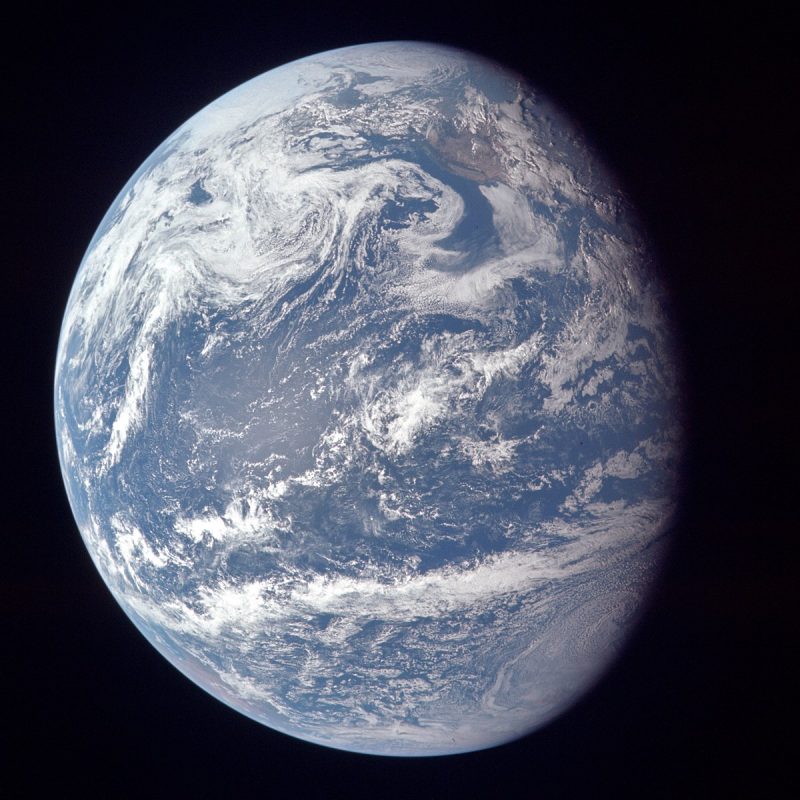
There appear to be lots of water worlds in our Milky Way galaxy. Some might have oceans entirely covering their surfaces. Others might have subsurface oceans below icy crusts. But some studies suggest that worlds similar to Earth – “beach worlds” where the salty oceans and land coexist – might be relatively rare. Now scientists at the National Astronomical Observatory of Japan and the University of Tokyo say otherwise. On September 30, 2022, they presented new simulations suggesting that truly Earth-like exoplanets with oceans and continents, and beaches along the boundaries, might be more common than previously thought. Their statement explained:
By taking into consideration water produced from interactions between the still molten surface of a young planet and its primordial atmosphere, the team found that a wide range in final water content is expected. And within that range, several percent of roughly-Earth-sized planets in habitable zone” rel=”noopener” target=”_blank”>habitable zones should have appropriate amounts of water for a temperate climate.
And a temperate climate means possible life!
The researchers published their peer-reviewed paper in Nature Astronomy on September 29, 2022.

Planets in the habitable zone
Generally, we tend to think of potentially habitable planets as those that are in the habitable zone of their stars. That’s the region around a star where temperatures could allow liquid water to exist on a rocky planet. However, scientists say that some planets in the habitable zone might not necessarily be suitable for life. Even for the ones that do have water, some may not have enough, while others may actually have too much.
This is especially true for planets orbiting red dwarf stars. The situation may be even more extreme, with some planets having no water at all, while others are covered in global oceans. On Earth, life requires water, but it also needs nutrients from the rocky crust. Both the oceans and continents help support the geochemical carbon cycle. In this sense, an “ideal” planet may have abundant water and dry land masses. But how common is that kind of planet? As the paper stated:
Exoplanet surveys around M [red] dwarfs have detected a growing number of exoplanets with Earth-like insolation. It is expected that some of those planets are rocky planets with the potential for temperate climates favorable to surface liquid water. However, various models predict that terrestrial planets orbiting in the classical habitable zone around M dwarfs have no water or too much water, suggesting that habitable planets around M dwarfs might be rare.
Also, scientists believe much of Earth’s water likely came here from comets and asteroids. Is that a fluke, or a fairly common occurrence elsewhere? What other ways might rocky planets acquire water?
Earth-like ocean planets
The new study suggests that there are indeed other ways for rocky planets to acquire water as they form. Rocky planets form and grow as material collides together in the protoplanetary disk. The heat produces melted magma. Hydrogen gas in the planets’ early primordial atmospheres reacts with the magma to produce water.
With that in mind, the researchers produced new simulations to calculate how much water might be created. The researchers calculated different planetary simulations of water production. These models show the creation of water in the planet’s primordial atmosphere with no external sources needed.
The results are tantalizingly positive. Rocky exoplanets orbiting red dwarfs can indeed have sufficient amounts of water to be potentially habitable. In fact, as the paper stated, several percent of such worlds that are similar in size to Earth can have similar amounts of water:
We estimate that 5% to 10% of the planets with a size of <1.3 Earth radius orbiting early-to-mid M dwarfs have appropriate amounts of seawater for habitability. Such an occurrence rate would be high enough to detect potentially habitable planets by ongoing and near-future M-dwarf planet survey missions.

More specifically, the researchers say that about 25% of Earth-sized rocky planets in the habitable zones of red dwarfs might be true water worlds, covered completely in water. They categorize the remaining 75% as water-poor, but these are the ones capable of having more Earth-like climates. And of those, they calculate 5% to 10% could actually support oceans like Earth’s. That’s not insignificant, considering how astronomers say that billions of rocky worlds likely exist in our galaxy alone.
Observing ocean planets around red dwarfs
In the coming years, scientists should be able to directly verify some of these ocean worlds. Telescopes like NASA’s new Webb telescope, TESS and PLATO will be able to find them and analyze their atmospheres. It will be very interesting to see what they find!
Another recent study from researchers at the University of Chicago also supports water worlds around red dwarfs. That study, though, suggests most of that water may be underground.
Bottom line: Researchers in Japan say that Earth-like ocean planets orbiting red dwarf stars may be fairly common. Up to about 10% may have oceans similar to our own.
Source: Predicted diversity in water content of terrestrial exoplanets orbiting M dwarfs
Source (preprint): Predicted diversity in water content of terrestrial exoplanets orbiting M dwarfs











